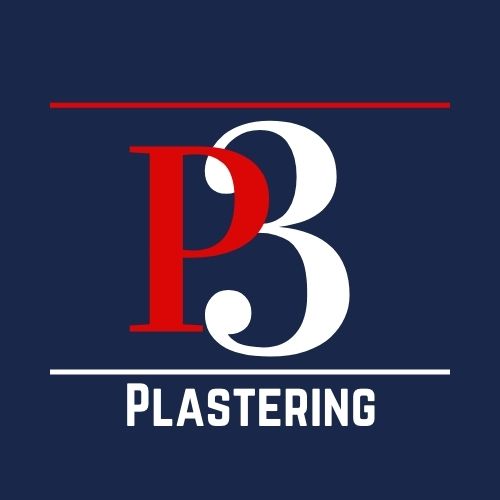Plasterboarding
- Fully Qualified Plasterers
- Over 30 Years Experience
- Workmanship Guarantee
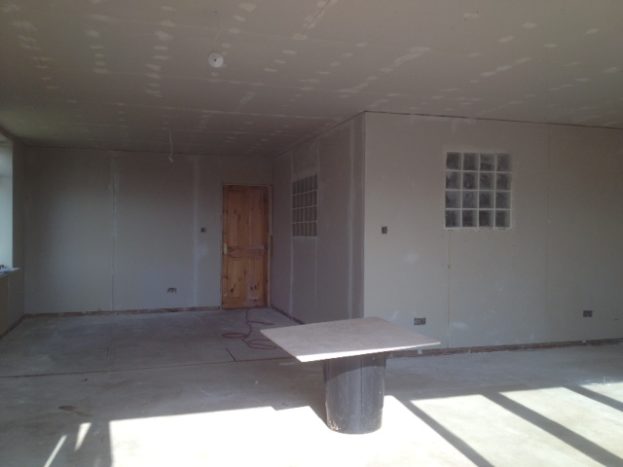
Expert Plasterboarding Services in Sheffield
Welcome to P3 Plastering, your trusted source for top-quality plasterboarding services in Sheffield. With over 30 years of experience in the plastering industry, we take immense pride in delivering impeccable plasterboarding solutions that enhance your construction and renovation projects.
Our dedication to perfection, meticulous attention to detail, and unwavering focus on customer satisfaction distinguish us as the top choice for all your plasterboarding requirements.
Craftsmanship That Defines Excellence
Plasterboarding, often hailed as the backbone of modern construction and renovation, is an art that demands not just skill but a profound understanding of materials, techniques, and client aspirations. We’ve dedicated decades to perfecting this art, making us the go-to choice for those who seek nothing short of excellence.
Committed to Your Vision
Every project we undertake, whether it’s a new build, an extension, or a renovation, is an opportunity for us to showcase our unwavering commitment to your vision. We understand that your space is a reflection of your unique taste and style, and we’re here to ensure that it embodies your personality in every detail.
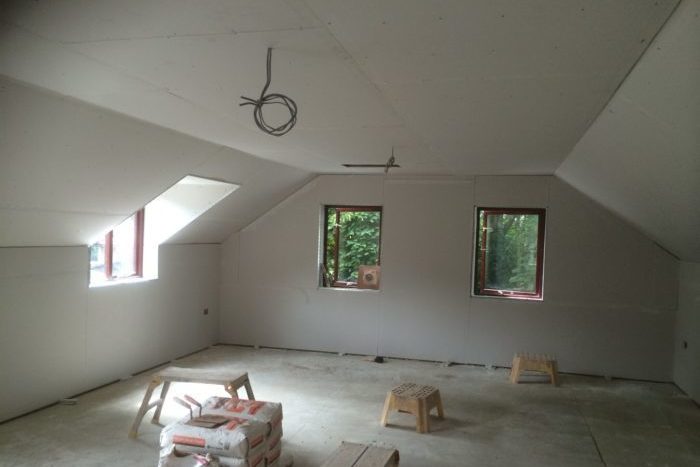
What Is Plasterboarding
Plasterboarding is a versatile construction technique used to create smooth, even surfaces on walls and ceilings. It involves attaching plasterboard panels to various surfaces, such as stud wall frames, ceilings, or brick and block walls. These panels serve as the foundation for a wide range of finishing options, including paint, wallpaper, and decorative plasters.
It is the go-to plastering method used in new builds, extensions, and renovations, offering efficiency, versatility, and cost-effectiveness.
In new builds and extensions, it is often preferred due to the ease of use and speed, making it a more budget-friendly option than solid plastering. It’s also highly adaptable, allowing for the use of different types of plasterboard to address specific issues.
For instance, there are plasterboards designed for soundproofing, insulation, and dampness control, as well as specialised fire-retardant boards required for specific projects to comply with building regulations.
Failure to install plasterboard correctly can result in uneven walls, cracked plaster and even walls or ceilings coming down. Also it is essential that the correct plasterboards are selected for specific projects as it could lead to compliance issues with building regulations if not. When in doubt, seeking advice from an experienced plasterer is essential.
Plasterboarding Techniques
As outlined above plasterboarding involves attaching plasterboard panels to various surfaces, including stud wall frames, ceilings, and brick or block walls. Depending on the surface, different techniques are employed.
For stud wall frames and ceilings, plasterboard panels are securely screwed in place. In contrast, brick and block walls utilise a technique known as “dot and dab.”
The dot and dab technique entails strategically applying dabs of plasterboard adhesive to the wall, allowing the plasterboard to adhere securely. Adhesive is also applied around the board’s edges to create a strong seal.
The plasterboard is then skimmed. This skim coat not only provides a beautifully smooth, seamless finish but also ensures the corners and edges are crisp and precise. After the plaster has dried, the surfaces are ready to be painted, enhancing the aesthetics of your space.
Why Plasterboarding Matters
Plasterboarding is the essential foundation for turning ordinary spaces into extraordinary ones. From bare brick, block, steel or wood frames it matters because it transforms spaces into rooms and reflections of your style and aspirations. We understand it’s significance in construction and renovation as it serves to provide the following:
Aesthetic Excellence
It creates a flawless canvas for your interior design dreams, allowing for vibrant paint, elegant wallpaper, and decorative plasters.
Efficiency and Versatility
It's faster, cost-effective, and adaptable, addressing diverse needs such as soundproofing, insulation, and fire resistance.
Energy Efficiency
It improves insulation, enhances energy efficiency, and leads to long-term savings.
Fire Safety
Certain projects require fire-resistant plasterboards to comply with regulations and ensure safety.
Acoustic Comfort
Specialised acoustic plasterboards create serene environments, whether in offices or homes.
Age Rejuvenation
It breathes new life into older spaces, leaving them smooth and modern.
Compliance Assurance
Choosing the right plasterboard is essential for meeting building regulations.
Enhanced Durability:
Plastering reinforces walls and ceilings, adding an extra layer of protection against wear and tear, ultimately prolonging the lifespan of your property.
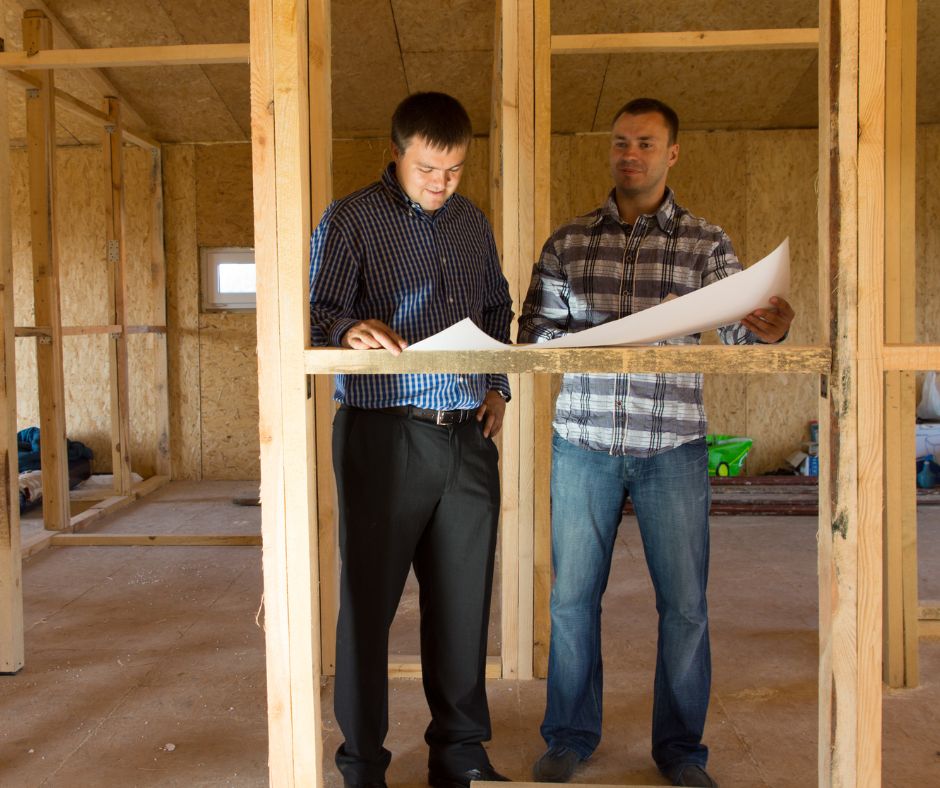
Types of Plasterboarding Projects We Undertake
Residential
From single rooms to entire homes, we provide plasterboarding solutions that elevate your living spaces.
Commercial
Our services are tailored to meet the needs of commercial properties, including offices, retail spaces, and more.
Industrial
We offer plasterboarding solutions for industrial settings, ensuring durability and functionality.
The Key Benefits Of Our Plasterboarding Service
Choosing P3 Plastering for your plasterboarding needs in Sheffield and surrounding areas brings numerous benefits:
Enhanced Property Value
Well-executed plasterboarding can significantly increase the value of your property. Straight walls and crisp corners can make all the difference to a living space.
Improved Insulation
It improves energy efficiency and soundproofing, creating a comfortable environment.
Fire Resistance
Plasterboard offers fire resistance, enhancing safety in your spaces.
Versatile Finishing Options
Our plasterboard surface is prepared for various finishing choices, including painting and wallpapering.
what makes us different
The values we live by
Quality Craftsmanship
We take pride in delivering superior craftsmanship with attention to detail, ensuring flawless results that stand the test of time.
Customer Satisfaction
Your satisfaction is our priority. We go above and beyond to exceed your expectations and ensure a positive experience from start to finish.
Reliability
You can count on us to deliver on our promises and complete projects on time, with professionalism and integrity.
Communication
We believe in open and transparent communication, keeping you informed throughout the plasterboarding process and addressing any concerns promptly.
Professionalism
Our team conducts themselves with professionalism at all times, treating your property with respect and maintaining a clean and organised work environment.
Innovation
We stay updated on the latest techniques and materials in the plasterboarding industry, continually seeking innovative solutions to enhance our service and meet evolving needs.
Flexibility
We understand that every project is unique. We adapt our approach to accommodate your specific requirements and preferences, ensuring a tailored solution that meets your needs.
Safety
The safety of our team and your property is paramount. We adhere to strict safety protocols and standards to mitigate risks and ensure a secure working environment
Value
We strive to provide excellent value for your investment, offering competitive pricing without compromising on the quality of our workmanship or materials.
With over three decades of experience in plasterboarding, P3 Plastering has honed its expertise in the craft. Our deep understanding of plasterboarding techniques, coupled with the proficiency of our skilled craftsmen, ensures consistently outstanding results. At P3 Plastering, we prioritise your satisfaction and collaborate closely with you to realise your vision for your space.
Our Promise And Your Peace of Mind
With meticulous attention to detail and care, our promise is to deliver exceptional quality and enduring beauty to every project. Your peace of mind is our priority; we handle every aspect of the job with professionalism and precision, ensuring confidence in both the process and the results.

Expertise
With decades of collective experience in plasterboarding, our team at P3 Plastering has honed our skills to perfection. We've handled a diverse range of projects, from residential renovations to commercial developments, ensuring that each job benefits from our wealth of expertise and meticulous attention to detail.

Customer Satisfaction
At P3 Plastering, customer satisfaction is more than just a priority—it's our driving force. We're committed to delivering results that not only meet but exceed our clients' expectations. From the initial consultation to the final finishing touches, we strive to ensure that every aspect of our service leaves our customers delighted with the outcome.
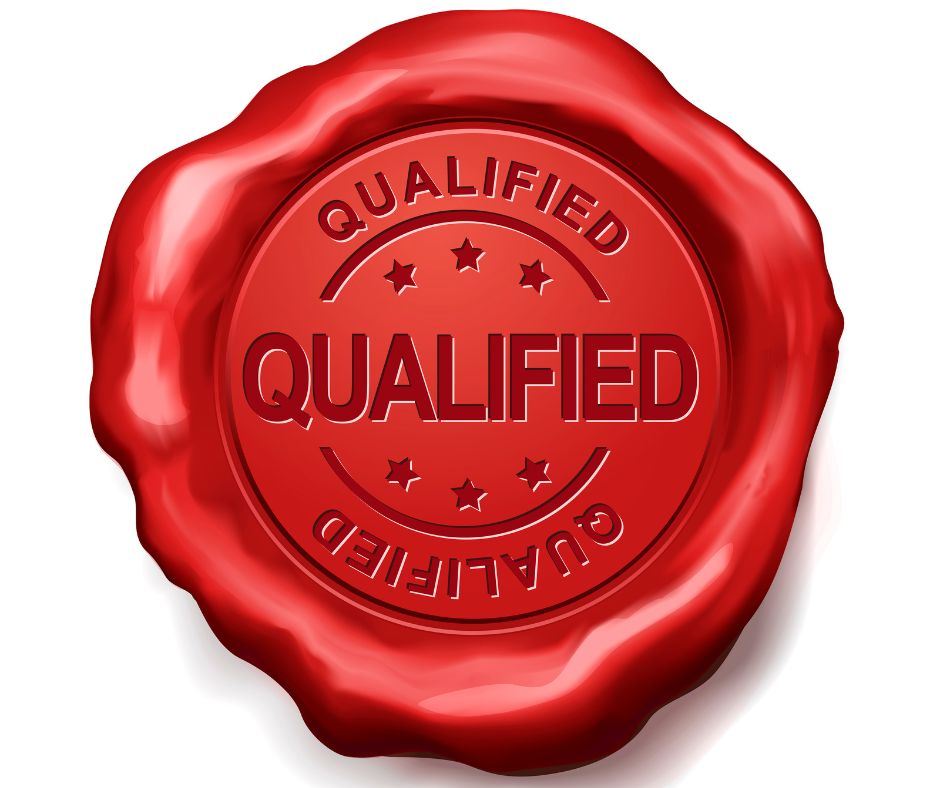
Professionalism
Professionalism is at the core of everything we do. From our punctuality and reliability to our courteous and respectful demeanor, we uphold the highest standards of professionalism throughout every stage of your plasterboarding project. You can trust our team to handle your property with care and to conduct ourselves with integrity and professionalism at all times.
Timely Completion
We understand the significance of timely completion when it comes to your construction and renovation projects. We take pride in our unwavering commitment to delivering results within agreed-upon timelines, ensuring your project stays on track and on schedule.
When you choose P3 Plastering, you choose a partner dedicated to delivering your project on time, ensuring a smooth and stress-free experience
Your project timeline is our commitment and you can trust us for punctual and efficient results, every time.

Plasterboarding: Frequently Asked Questions
Here are responses to frequently asked questions about our plasterboarding services:
Plasterboarding involves attaching plasterboard panels to surfaces like walls and ceilings, creating a smooth, even base for finishing. Traditional plastering, on the other hand, applies wet plaster directly to the surface, which is then smoothed and finished. Plasterboarding is often faster, more cost-effective, and allows for versatile finishing options.
Yes, it is versatile and applicable to new builds and renovations.
Yes, there are moisture-resistant plasterboards designed specifically for damp environments. These boards offer added protection against moisture and are ideal for bathrooms and kitchens. It’s essential to choose the right type of plasterboard to prevent damage in humid areas.
Absolutely. Acoustic plasterboards are engineered to reduce sound transmission between rooms. They are commonly used in residential and commercial spaces where soundproofing is a priority, such as theaters, recording studios, and bedrooms.
The project’s timeline may fluctuate based on variables such as its scale and complexity. We provide estimated timelines during consultations. Small projects may take a day or two, while larger ones may require several days or weeks for completion.
A Before and After Plasterboarding Project
Discover our Portfolio to witness the remarkable impact of our skills and experience. These before-and-after images showcase our commitment to perfection:
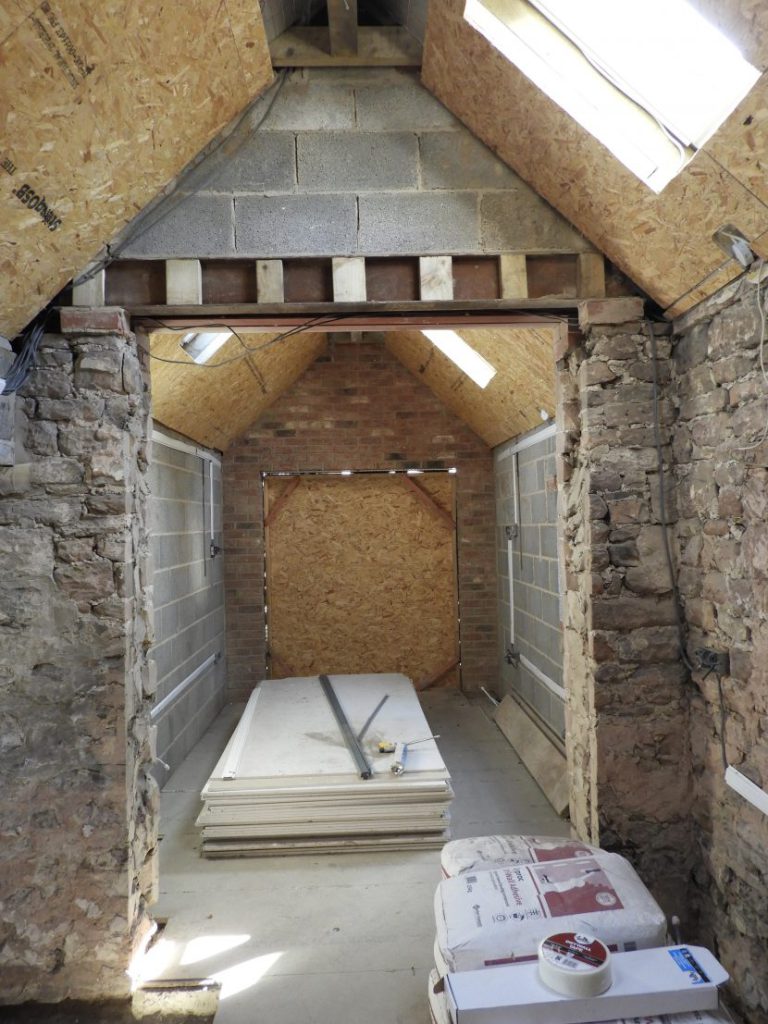
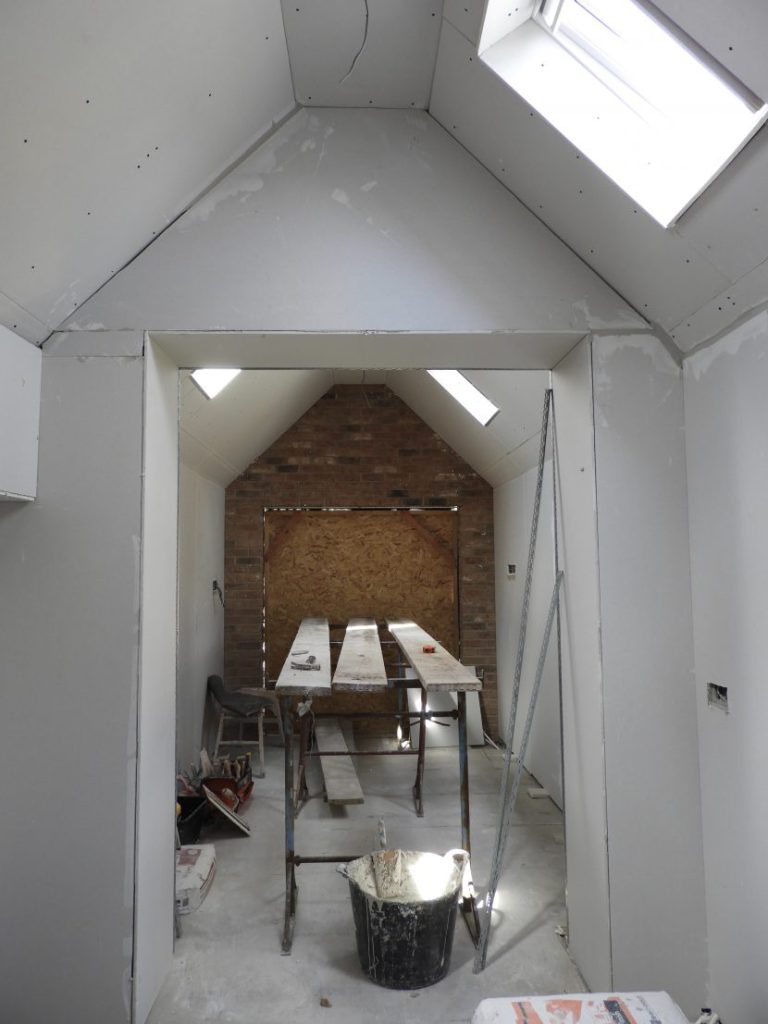
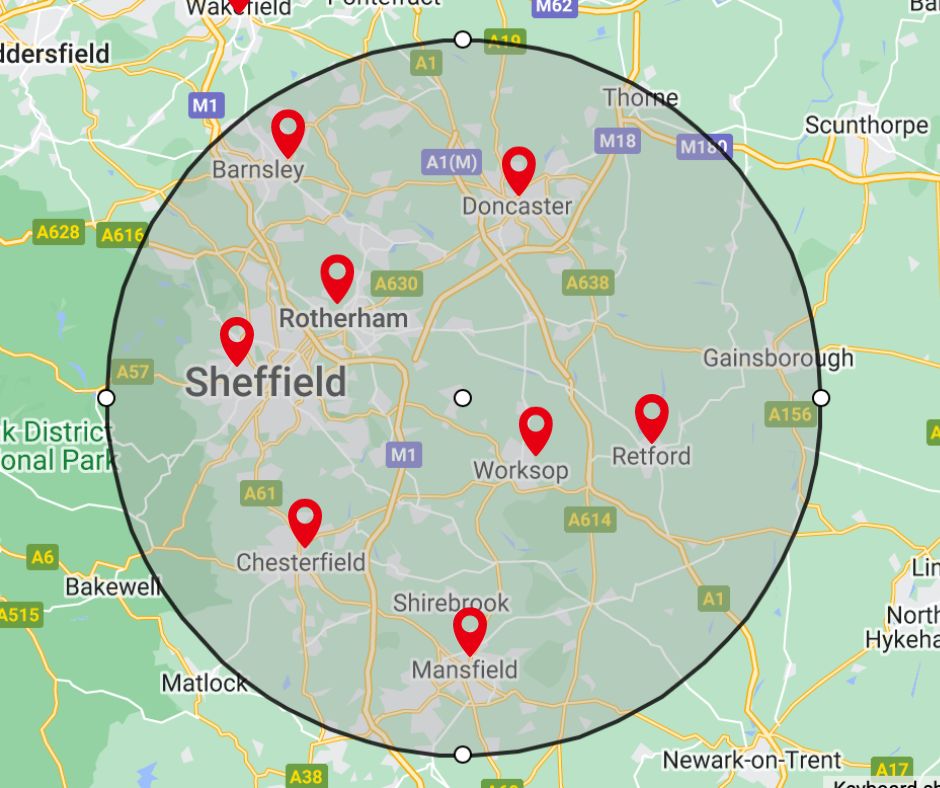
Areas Covered by Our Services
We proudly extend our plasterboarding services throughout South Yorkshire, encompassing parts of Derbyshire and Nottinghamshire as well.
Specifically, we cater to various regions including Sheffield, Rotherham, Barnsley, Doncaster, Chesterfield, Worksop, and Retford.
No matter where you are within these areas, our dedicated team is ready to bring quality plasterboarding services to your doorstep.
Additionally, for larger projects or special requests, we are flexible and may be able to accommodate clients outside of our usual service areas.
So, if you’re located beyond our listed regions, don’t hesitate to reach out and make an enquiry. We’re here to discuss your needs and explore how we can bring our expertise to your project, regardless of location.
Prices and Packages
Our transparent pricing and customised packages cater to your specific needs. Contact us for a free consultation and quote.
See What Our Customers Say About Us
Experience the satisfaction of our work through the eyes of our valued clients. Don’t just take our word for it; our genuine testimonials are readily available for verification on independent platforms such as Checkatrade, Google, and Facebook.
Brilliant job. It was completed very fast, and to a great standard. Would recommend to a friend….

Jordan
CorleyNeil does a fantastic Job

steven
rowbothamNeil was very professional and did a fantastic job. Cleaned up after himself too. Would highly recommend.

